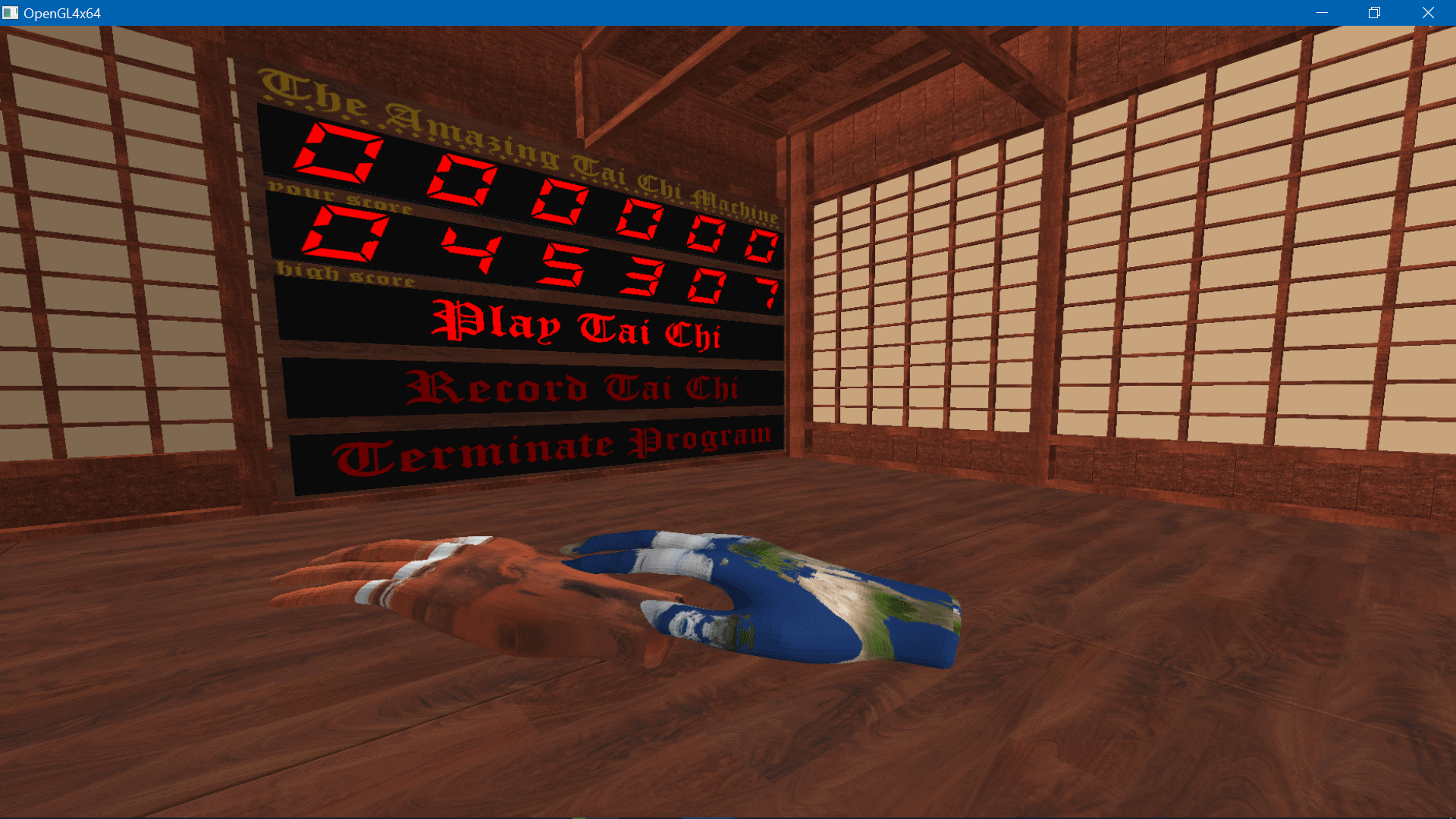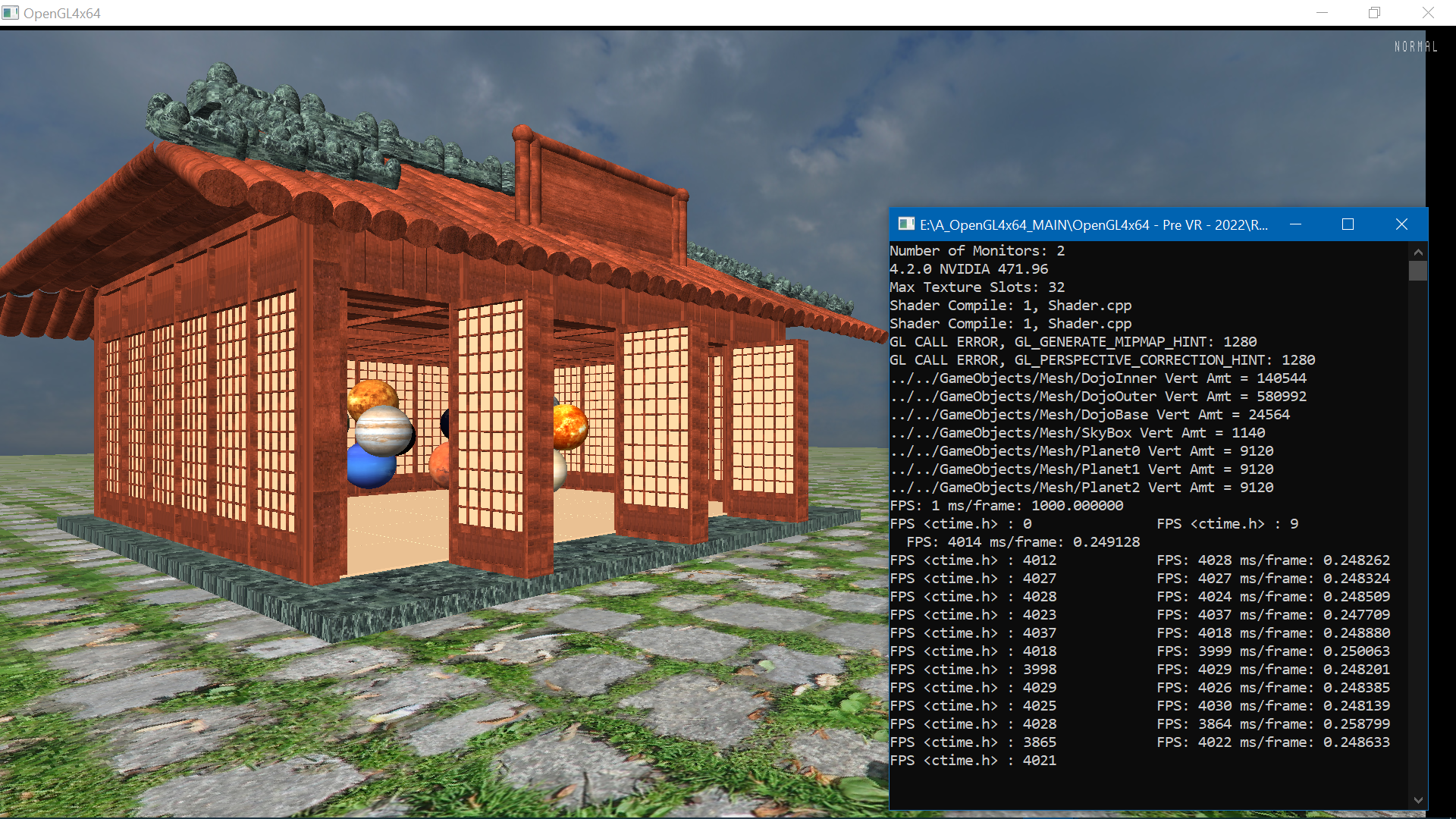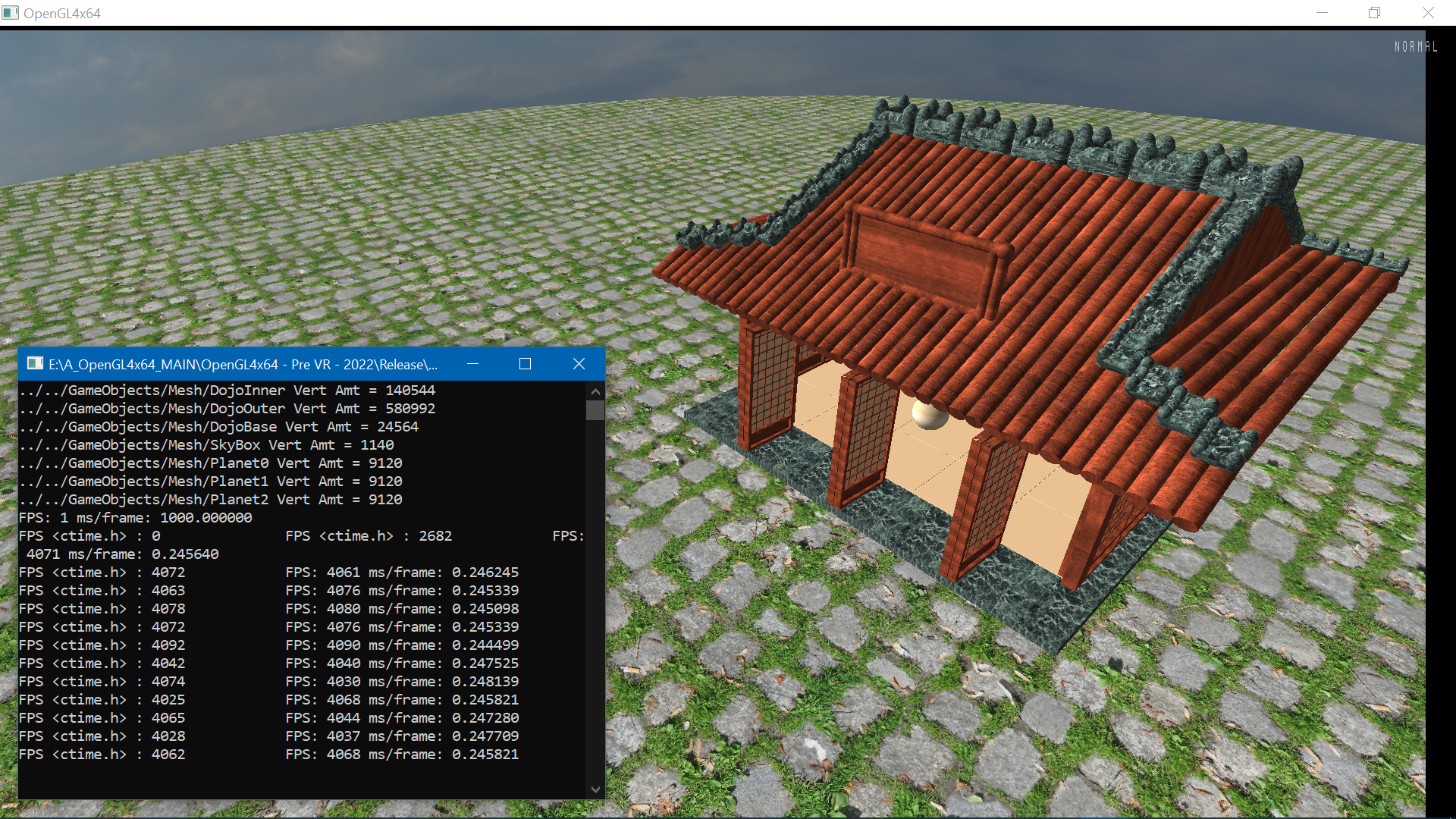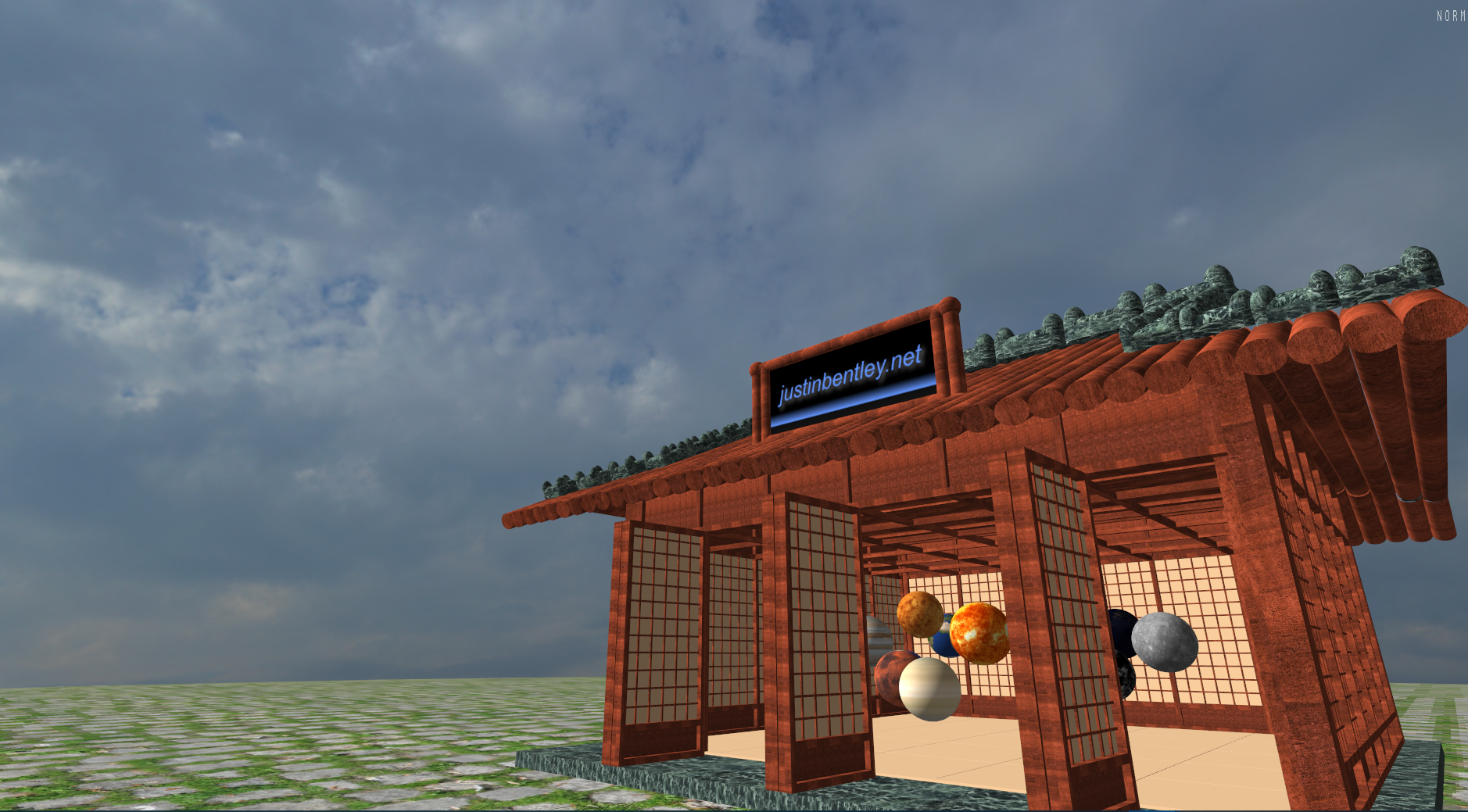
Information and Communication Technology Project;
Unlike Uni/VIC which used OpenGL 1.2, the final University project which I suggested myself (after consultation with my Professor and subsequent Sponsor, Rob Cox) and its main component is OpenGL 4.4 in C++.
OpenGL 4.4 was not taught at University of Canberra therefore it became my responsibility to learn it on my own accord and it was fundamentally different from OpenGL 1.2 and much more complex especially being that you have to write your own Shaders.
Further to learning OpenGL 4.4 it was also my task to learn GLSL (GL Shading Language), AutoDesk Maya, the OpenGL C++ helper libraries GLFW, GLEW & GLM, SteamVR API also known as OpenVR (from reverse engineering Steam examples) all while creating a complete and comprehensive game engine, game assets and the game itself within five months.
This Project became a high-performant Virtual Reality Tai Chi Simulator that I wrote completely from scratch using only;
- C++
- OpenGL 4.4 (latest version, at the time)
- x64
- GLSL (OpenGL Shading Language)
- openvr.h (SteamVR API)
- GLFW (OpenGL OS utility, GDI, Keyboard, Mouse & Sound context helper)
- GLEW (OpenGL Extension Wrangler)
- GLM (OpenGL Math / Quaternion Library)
- Autodesk Maya, .obj file format and my own C++ importer
*if you rewind to the start of the video I delve into the code and show off the Maya .obj Mesh importer that I wrote in C++.
My OpenGL Proffesor was very happy with it, especially impressed that I made it using the fabled modern OpenGL, mesh's and a mesh importer and that I had a Tai Chi master play the game while I recorded his positions to .txt to be replayed in-game concurrently with the player to create a score.
A demonstration of how I created the Skybox.
I started off becoming familiar with modern OpenGL (as its known) by cloning the Microsoft screensaver Bubble's
A walkthrough of the mostly complete environment and in the middle of the video, what became of Bubbles!
It's also a walkthough of my very own modern OpenGL, C++ Game Engine with most of the Tai Chi environment complete and displaying a monitor/non-VR field of view.
And for anyone wondering how high-performant it was here are some snaps of the engine running a scene with the Sky, Ground, Planets and the elaborate (Maya breaking) three part Training Room running 775,740 vertices which should equate to around one and a half million triangles, all with lighting and texture;

4000 frames per second of real-time render on a 1080ti;


And finally, just for giggles 😉;